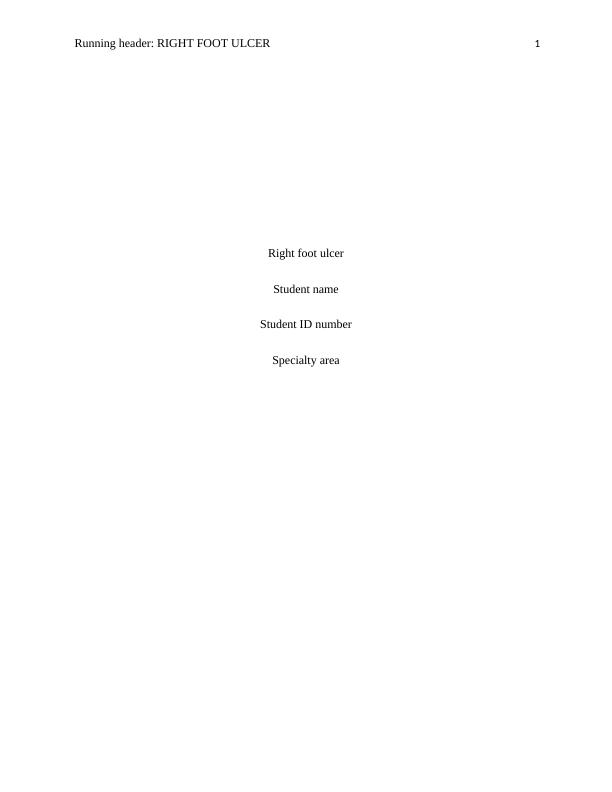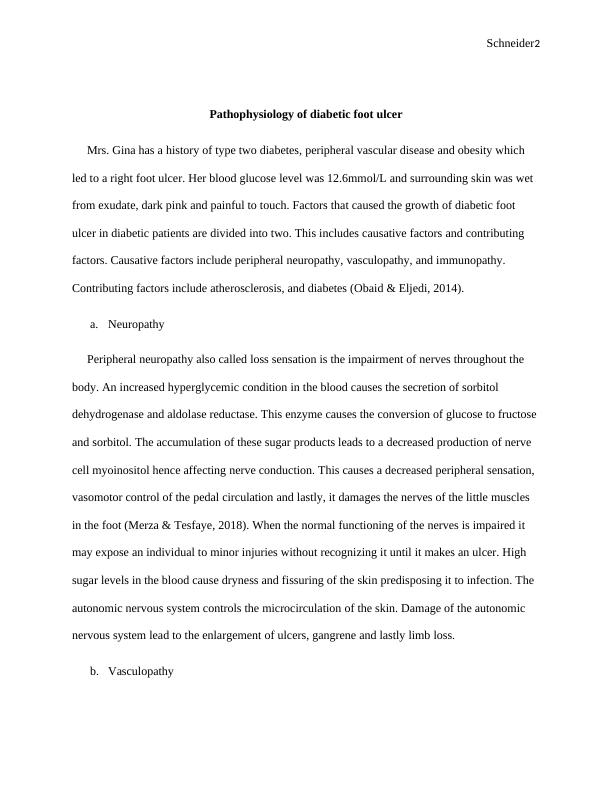Pathophysiology of Diabetic Foot Ulcer
Added on 2023-04-11
10 Pages2234 Words86 Views
End of preview
Want to access all the pages? Upload your documents or become a member.
Foot Ulcer and Diabetes: Pathophysiology, Impact, and Management Strategies
|10
|2503
|487
Pathophysiology, Nursing Priorities and Management of Diabetic Foot Ulcer: A Case Study
|10
|2726
|139
Gerontological Patient Requiring Surgical Debridement
|7
|2274
|106
Managing Diabetic Foot Ulcers: Pathophysiology, Risk Factors, and Treatment
|14
|2718
|410
Analyze and Respond to Client’s Health Information - Case Studies
|15
|4171
|92
Diabetes Case Study: Analysis, Pathophysiology, and Nursing Management
|10
|2527
|2



